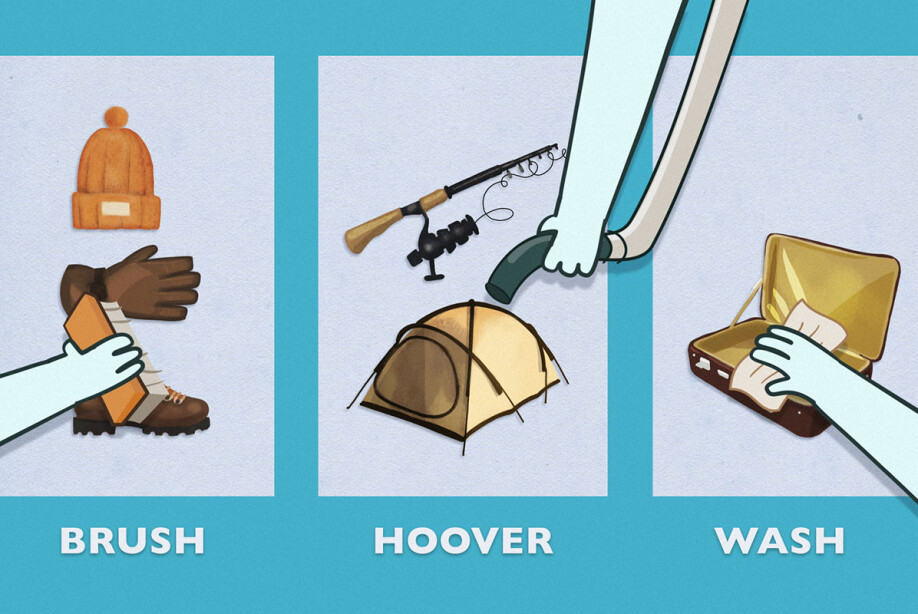THIS ARTICLE/PRESS RELEASE IS PAID FOR AND PRESENTED BY NINA - Norwegian Institute for Nature Research - read more

Norwegian-Russian cooperation aims to stop the spread of alien species to the Arctic
This year, a major campaign is being launched in northwest Russia aimed at preventing the spread of alien species to Russian parts of the Arctic. Scientists fear that seeds, insects and parasites will establish themselves in the vulnerable northern regions, and ask travelers to take action.
The main message for travelers to Arctic regions is that they should brush, hoover and wash clothes, shoes, luggage and equipment before they start their journey. Fishing equipment should be disinfected. Such simple measures will protect the vulnerable plant and wildlife in arctic regions.
The campaign is launched this year in northwest Russia after being tested on travelers to Svalbard in a pilot project in 2018-2019. It is also now expanding to Iceland and Greenland.
Serious threat to species
“Alien species are a threat to biodiversity globally, but also in the Arctic. Our goal is to inform travelers that they can easily help reduce this problem. Seeds can get stuck on mountain shoes, parasites can follow fishing gear and so on. With simple measures, the dispersion of such stowaways can be avoided,” explains Jørn Thomassen, head of the project in the Norwegian Institute for Nature Research (NINA).
NINA is leading the campaign in cooperation with the Ministry of Agriculture and Forestry in Finland and the Swedish Environmental Protection Agency in Sweden. For the launch in Russia, The National Park Russian Arctic (NPRA) is the central partner.

Will raise awareness of travelers
Alien species are species that have come to an area where they naturally do not belong, due to human activity. They are one of the biggest threats to biodiversity globally. Many people are unaware that they can unconsciously carry alien species to the vulnerable natural areas. This is what the campaign is going to do something with.
“Alien species can establish themselves and displace local species, and also threaten entire ecosystems. Climate change increases the chance of unwanted species gaining a foothold in the Arctic,” Thomassen warns.
Collaboration with the tourism industry
In order for the campaign to succeed, we depend on good cooperation with tour operators, airlines, governments and more. The pilot project in Svalbard showed that the industries themselves took responsibility and were a crucial piece in reaching out to the travelers.
In Russia, the authorities and Russian tour operators carrying guests and workers to Arctic parts of Russia are also involved.
Uses animation film
An important part of the campaign consists of a two-minute animation film in which a speaking polar bear examines various travelers for alien species.
The film and accompanying website is translated into Russian and is meant to convince Russian-speaking travelers to take steps to stop the spread of alien species. The film is also subtitled in 13 languages for use in other parts of the Arctic.
Joint efforts
The campaign in northwest Russia is funded by the Ministry of Climate and Environment in Norway through the environmental cooperation programme with Russia.
For more information on the problem of alien species in the Arctic and measures to stop the spread of them on www.stoparcticaliens.com.
On behalf of the Norwegian Environment Agency, NINA has produced a report showing the status of mapping and monitoring of foreign species in the Arctic and recommended measures for further mapping and monitoring. The report from NINA (in Norwegian) can be read here.
Reference:
Jørn Thomassen et.al.: Fremmede arter i Arktis - med fokus på Svalbard og Jan Mayen, NINA Rapport;141, 2017. (Summary in english)
See more content from NINA:
-
How will climate change affect lakes worldwide?
-
White-tailed sea eagles are breeding in Ireland again after more than a century
-
Could a tunnel help wild reindeer in Norway?
-
Norwegian white-tailed sea eagles are helping to rebuild a lost population in Ireland
-
1 in 4 freshwater species are at risk of extinction: "It's not too late to take action"
-
Insects prefer cold winters with lots of snow





































